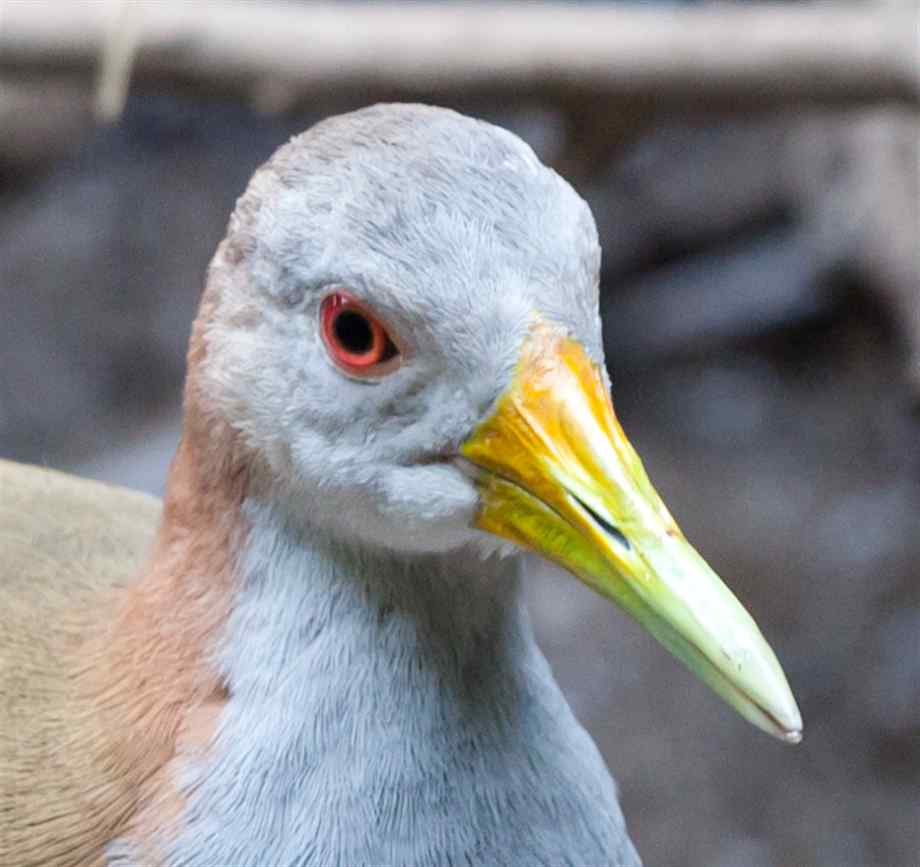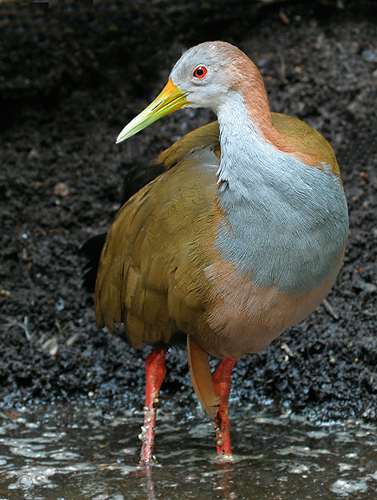
Aramides ypecaha
SUBFAMILY
Rallinae
TAXONOMY
Rallus ypecaha Vieillot, 1819, Paraguay. Monotypic.
OTHER COMMON NAMES
French: Rвle ypйcaha; German: Ypecaharalle; Spanish: Cotara
Ipacaб.
PHYSICAL CHARACTERISTICS
16–19.3 in (41–49 cm); 1.2–1.9 lb (565–860 g). Olive-brown
and vinous-chestnut, with gray face and foreneck, and black
rear body. Juvenile paler and duller.
DISTRIBUTION
Eastern and southeastern Brazil, Bolivia, Paraguay, Uruguay,
and northeastern Argentina.
HABITAT
Marshes, swamps, fields, and gallery forest.
BEHAVIOR
Often bold and inquisitive. Stance upright, gait elegant. Solitary,
but congregates in the evening for a communal display, rushing
around with a powerful chorus of screams, shrieks, and wheezes.
FEEDING ECOLOGY AND DIET
Arthropods, mollusks, seeds, and fruit; forages in early morning
and evening.
REPRODUCTIVE BIOLOGY
Monogamous. Breeds September through February (Uruguay).
Nest of grass and stems, on ground or in trees, usually near
water. Eggs: four to seven. In captivity, incubation 24 days;
young independent at eight to nine weeks.
CONSERVATION STATUS
Not threatened. Formerly locally common to abundant, it may
have suffered less from habitat destruction than its forestdwelling
congeners.
SIGNIFICANCE TO HUMANS
Often kept in captivity. Hunted in Argentina.
Photo Gallery of - Giant wood-rail




 Animalia Life
Animalia Life